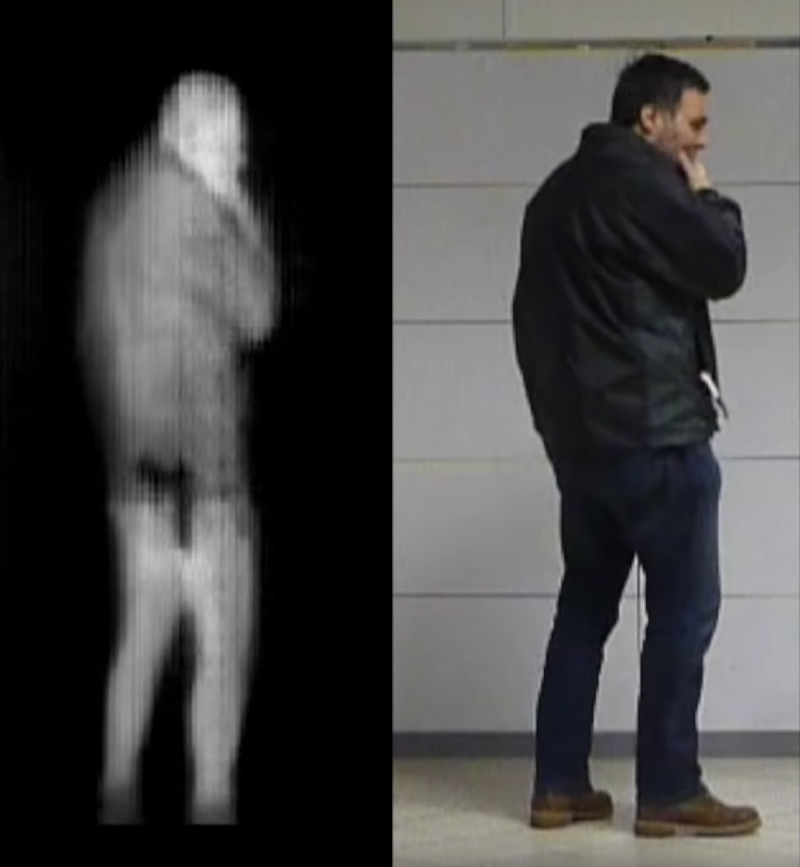Green Light for Terahertz Movies
Researchers generated video at 3000 frames per second using so-called terahertz radiation, waves at the long-wavelength end of the infrared region of the electromagnetic spectrum. To capture images rapidly, they first passed the radiation through a cloud of excited cesium atoms to convert it into green light, which allowed them to use a standard optical camera. The work opens up a new avenue for noninvasive imaging, potentially allowing engineers to peer inside products as they move through a production line.
In theory, terahertz signals—which have wavelengths between roughly 30 micrometers and 3 mm—are ideal for nondestructive examination of products from production lines. These waves can pass through fabrics, plastics, and paper, and at the same time are nonionizing, which means that, unlike x rays, they don’t carry enough energy to remove electrons from atoms and molecules. But in practice, this range of wavelengths is difficult to detect, compared with shorter and longer wavelengths. Additionally, sources of terahertz waves tend to operate at lower power than those in other parts of the electromagnetic spectrum, and terahertz detectors are less sensitive. While terahertz imaging technologies exist, they can’t capture images rapidly and at high resolution.
Instead of trying to address the limitations of current technology, Kevin Weatherill and his colleagues at Durham University in the UK tried a different approach, explains team member and graduate student Lucy Downes. “We convert the terahertz photons into visible photons, [so] we can make use of already very well-developed optical high-speed camera technologies.”
She and her colleagues used cesium atoms to perform the conversion. First they excited a cesium vapor in a quartz cell by hitting it with three continuous laser beams that constantly reexcited the atoms as they spontaneously decayed to the ground state. The team chose laser frequencies that produced excited atoms in a so-called Rydberg state, in which the most excited electron is only barely attached to the atom. Then, to create images, they shined a separate terahertz beam through a moving object and allowed the “shadow image” to hit the excited cesium vapor.
“The [Rydberg] atoms are very sensitive to the incident terahertz field,” Downes says. When one of these atoms absorbs a terahertz photon, it is transferred to a different Rydberg state that has a high probability of emitting a green photon during its decay process. For every terahertz photon absorbed, there is a 52% chance that a green photon will be emitted. With green light, the researchers could easily take a large number of relatively detailed snapshots in a short period of time.
The team created videos at 3000 frames per second of a small wheel spinning at 700 rpm, with the terahertz light peeking through slots between the wheel’s spokes. They also imaged a falling water droplet at a rate of 500 frames per second.
Downes says that the team plans to improve the system’s video capabilities even further. “There are lots of small changes that we can make to optimize the system and push the frame rate even higher, such as improving the laser stabilization and using an optical camera that is optimized for green light.” However, the upper limit—constrained by the lifetime of the atomic state—is 1 million frames per second.
Peter Weightman, a biophysicist at the University of Liverpool in the UK, says the work has “enormous potential for applications in a variety of fields” and is a major step forward. “This is a remarkable advance in the development of rapid terahertz imaging systems that is made possible by the very clever exploitation of subtle features in the electronic structure of cesium atoms.”
This research is published in Physical Review X.
–Sarah Wild
Sarah Wild is a freelance science journalist based in Johannesburg, South Africa.





